Mountain Fire in Ventura County California

The Storm Prediction Center issued an Extreme Fire Weather Outlook (note that those conditions are #6 on the Priority List for Mesoscale Sectors!) for portions of southern California on 6 November 2024, and the forecast office in Los Angeles issued both High Wind Warnings — for strong Santa Ana winds — and a Red Flag Warning, as shown here, noting that this was a Particularly Dangerous Situation. The NGFS dashboard shown below includes the alert readout for this fire several hours after its initiation. The fire was detected by three different scannings: the GOES-16 CONUS scan, the GOES-18 PACUS scan, and the GOES-18 Mesoscale Sector 1 scan. Which scan strategy saw it first? It should be no surprise that the 1-minute cadence of the Mesoscale Sector first saw the fire. The first 15 minutes of the detections are shown above.
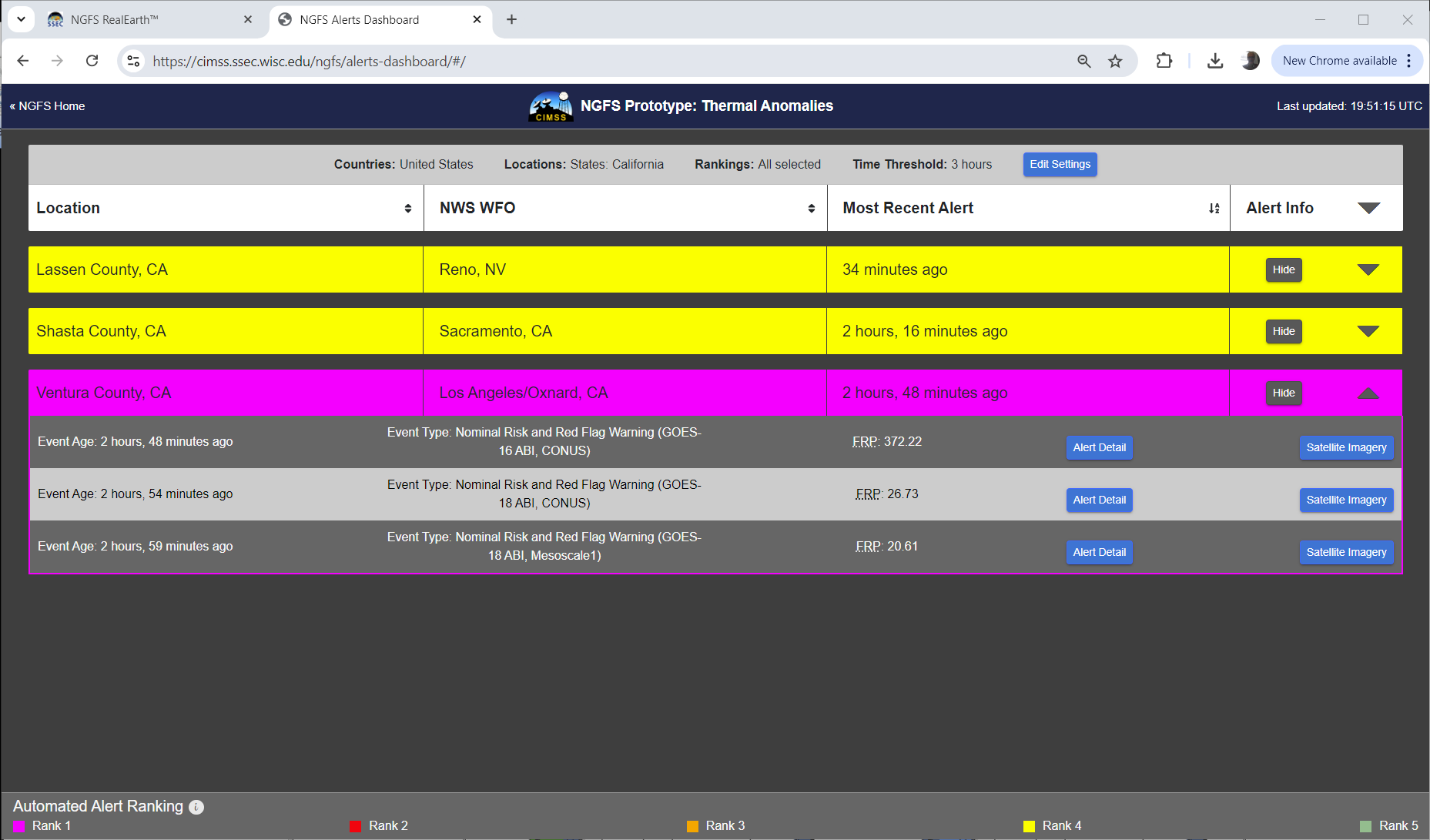
NGFS imagery below tracks the early development of the detections, at 1649, 1650, 1651, 1655 and 1700 UTC. NGFS Microphysics RGB is on the left, Fire Temperature RGB is on the right. The signal is initially apparent only in the NGFS Microphysics. It takes several minutes for a credible signal to appear in the Fire Temperature RGB — at 1655 UTC. These 5 images also show how mesoscale scanning (every minute) captures the rapid changes that occur.
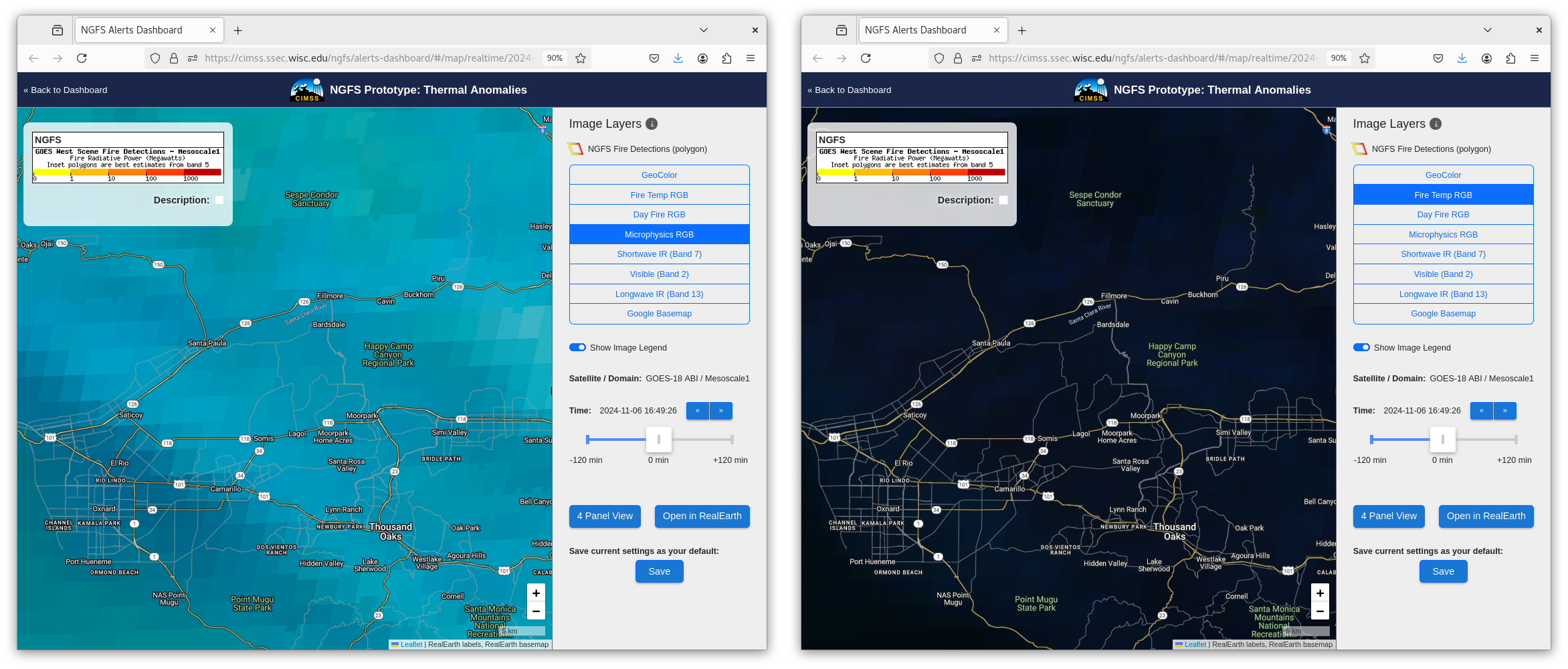

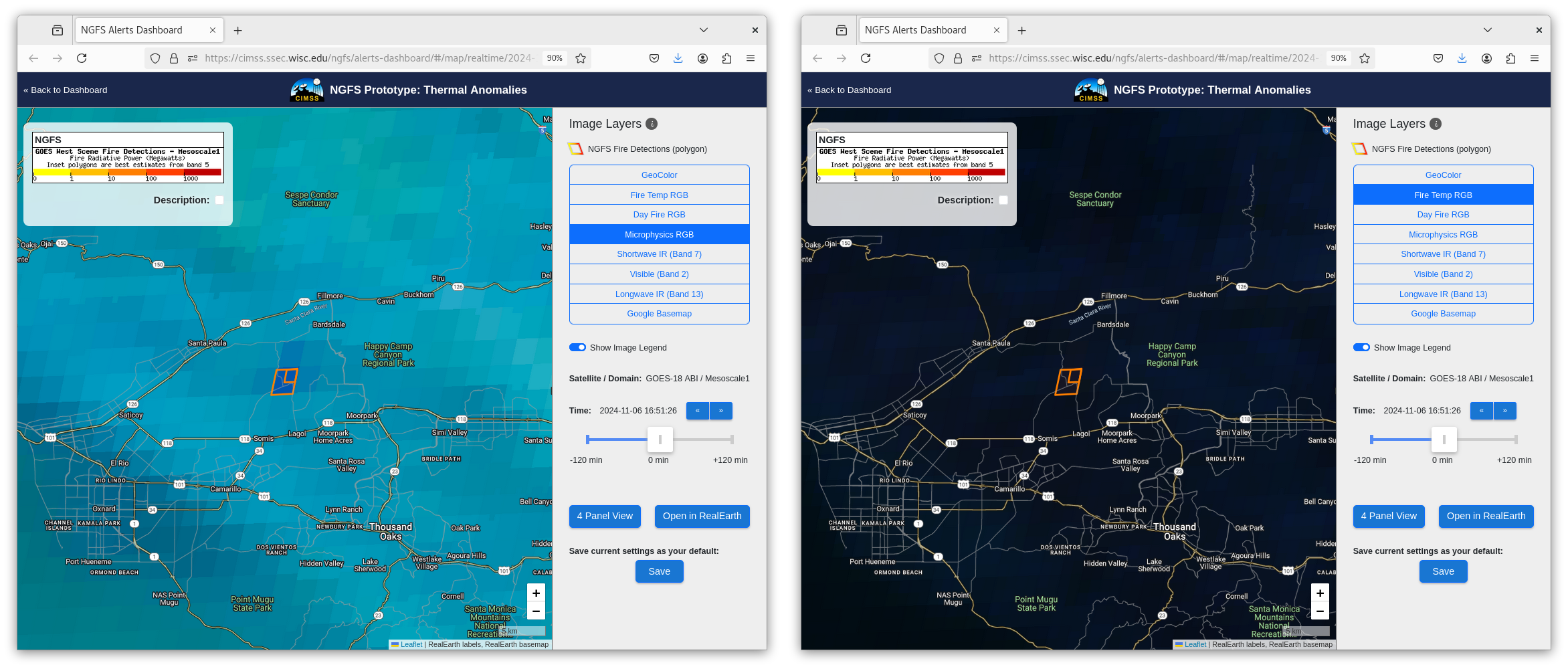
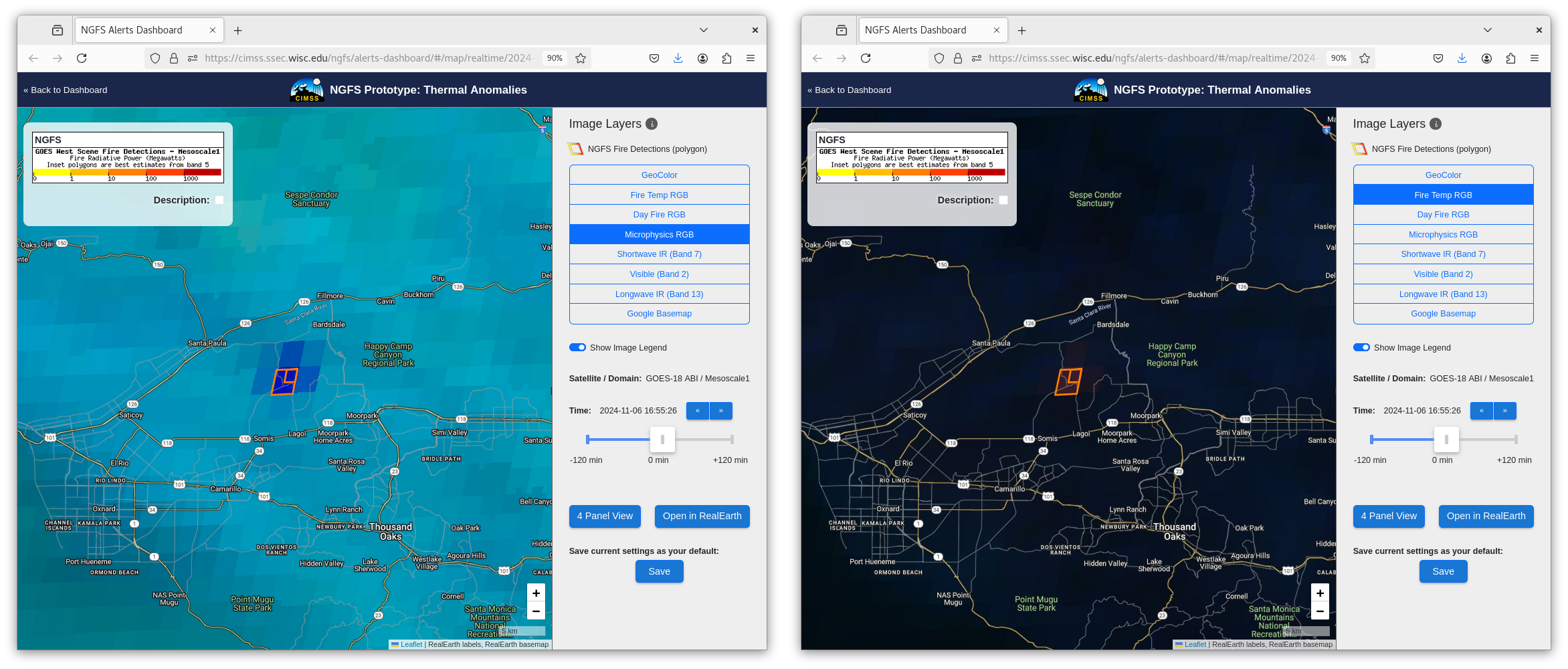
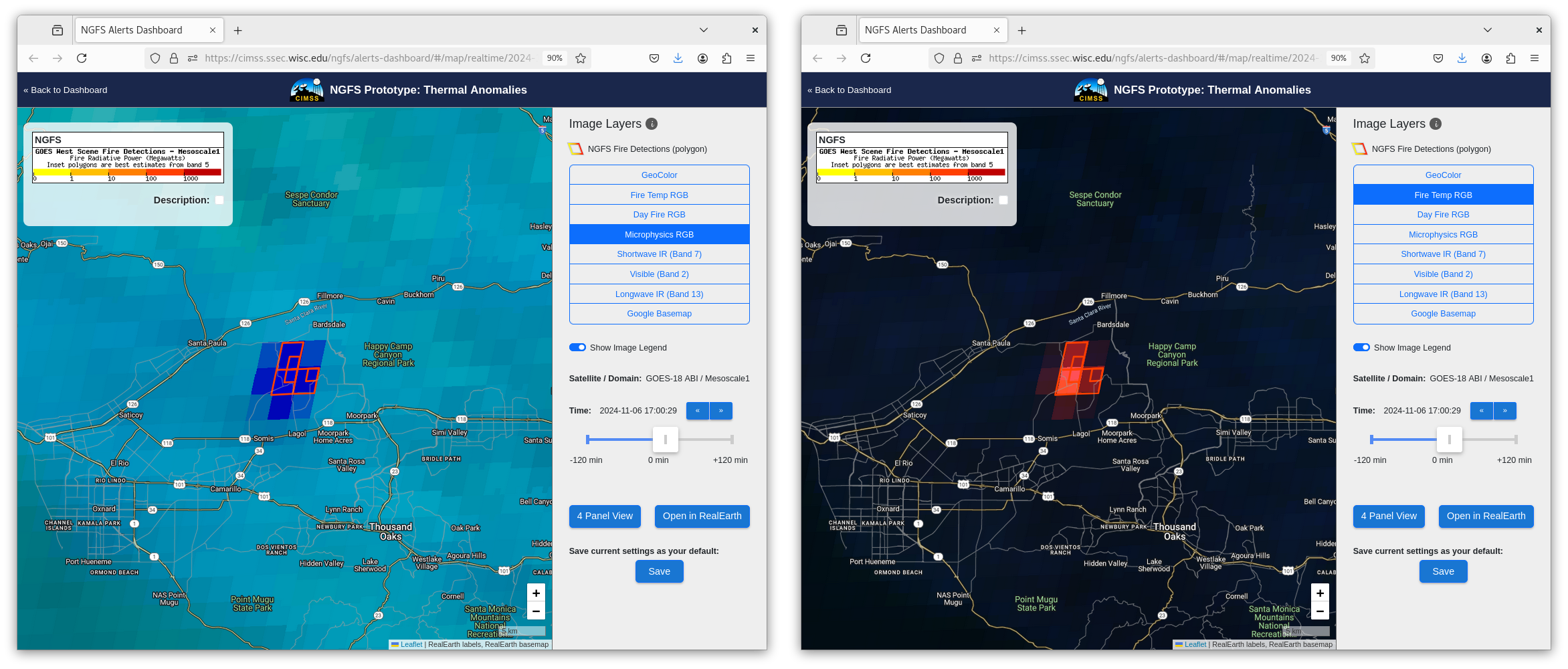
Three different GOES-R sectors were scanning this region; the GOES-18 Mesosector initially detected the fire at 1650 UTC. The toggle below shows the 5-minute scans from the GOES-16 CONUS sector (left) and the GOES-18 PACUS Sector at 1649, 1651 and 1656 UTC. The different colors in the NGFS Microphysics RGB imagery between the two satellites occur because of the different distances from the GOES-16 and GOES-18 sub-satellite points. A Fire pixel is detected by GOES-18 at 1651 UTC, one minute later than the mesosector detection above. A definitive pixel is not detected by GOES-16 until 1656 UTC. Make sure you are using the correct satellite and the correct scanning strategy (Call a meso!) if you are in a situation where every minute matters.

Santa Ana winds (surface analysis shown below) means that this fire grew quickly.
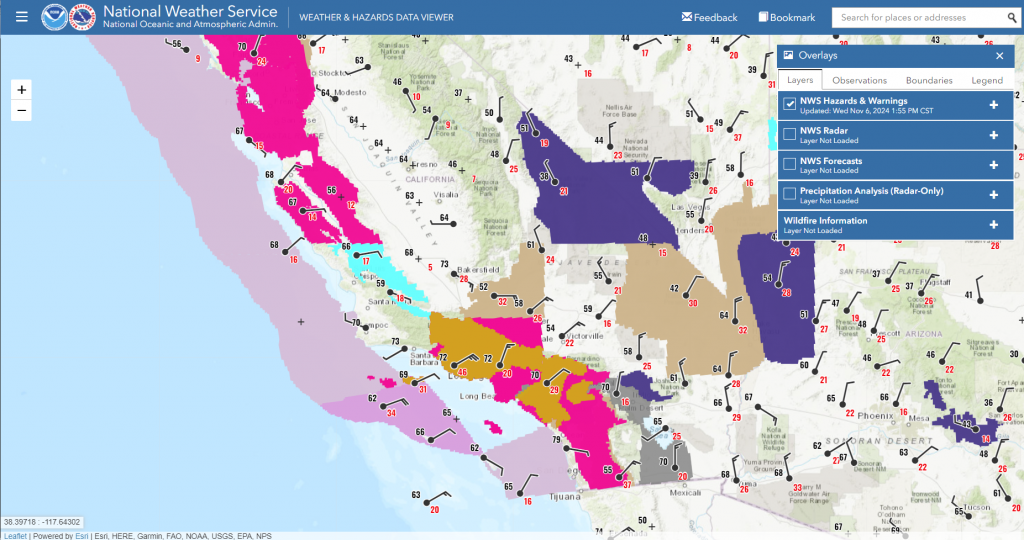
The toggle below compares the NGFS microphysics RGB and the Fire Temperature RGB at 1850 UTC, about 2 hours after the fire’s start. Significant growth in the fire area is apparent, and it has become very intense.
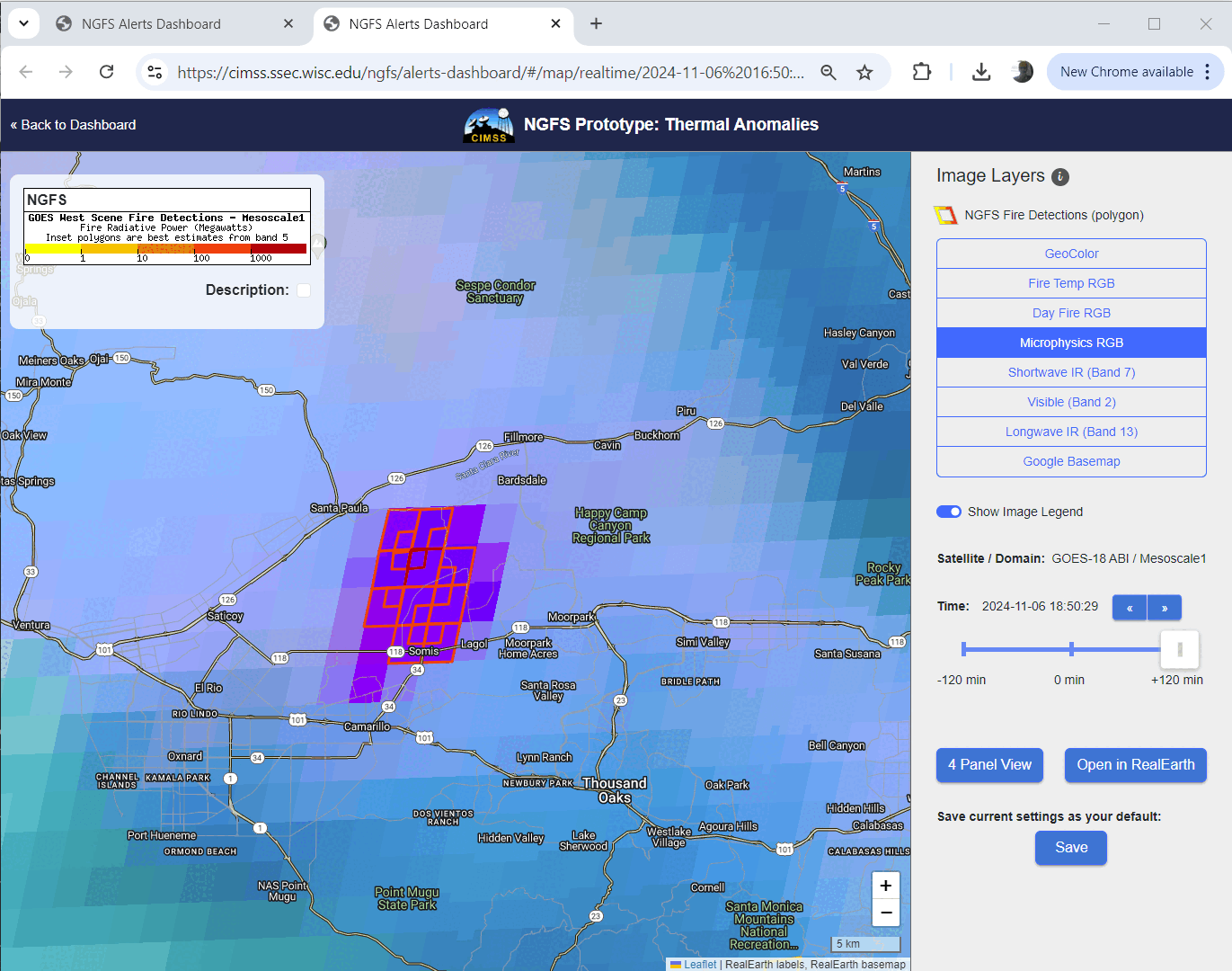
The RealEarth NGFS instance for the Mountain Fire allows a user to add other fields to the display in addition to satellite imagery and fire detections. GOES-18 Fire Temperature RGB with Building Counts is shown below. This active fire is just upwind of a significant amount of development!

The animation below from the CSPP Geosphere site shows the effect of the strong winds: the plume from this fire rapidly moves offshore. There is also a dust plume in the southern part of the the animation, also suggestive of strong winds. Indeed, the winds are strong enough to ground fixed-wing aircraft that might otherwise be used to fight this fire!
The animation for the same time of shortwave infrared data, below, shows the rapid development and expansion of the hotspot.
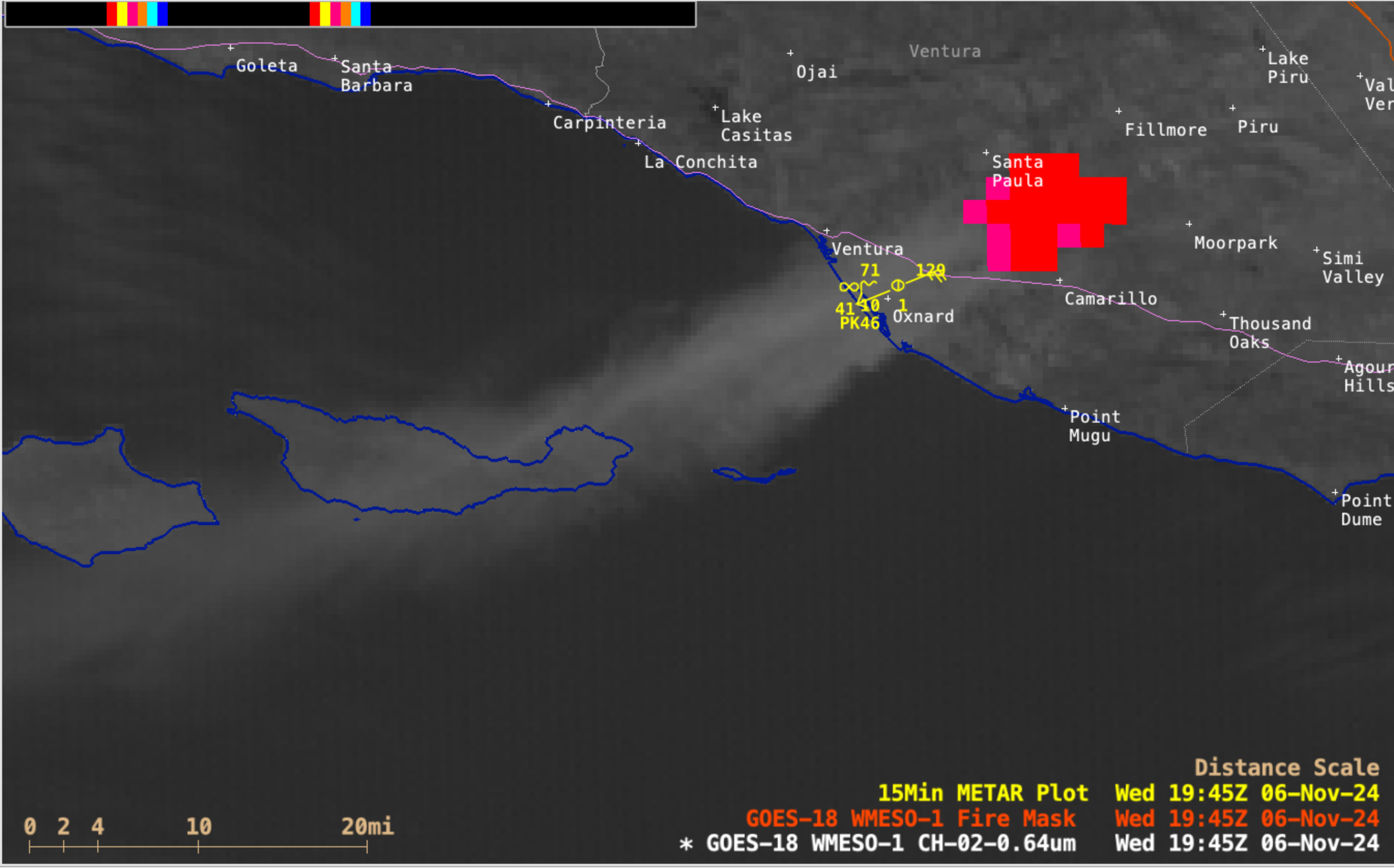
1-minute GOES-18 Red Visible (0.64 µm) images with an overlay of the Fire Mask derived product and plots of 15-minute METAR surface reports, from 1631-2200 UTC on 6 November; Highway 101 is plotted in magenta (courtesy Scott Bachmeier, CIMSS) [click to play MP4 animation]
1-minute GOES-18 Visible images with an overlay of the Fire Mask derived product (above) displayed the rapid increase in areal coverage and spread of the Mountain Fire’s thermal signature — the initial Fire Mask detection occurred at 1653 UTC. At 1945 UTC, the dense smoke plume reduced surface visibility to 1 mile at Oxnard; this smoke plume continued to drift across parts of the offshore Channel Islands National Park throughout the day. During that time period, peak wind gusts were 56 knots (64 mph) at Camarillo Airport, 55 knots (63 mph) at Point Mugu Naval Air Station and 50 knots (57 mph) at Oxnard (when blowing dust was being reported). The thermal signature indicated that the head of the wildfire quickly approached the Camarillo area and Highway 101.
30-second GOES-19 (*Preliminary/Non-operational*) Shortwave Infrared images (below) also showed the rapid southwestward run of the Mountain Fire toward Camarillo (KCMA) and Highway 101, driven by the strong northeast Santa Ana winds. (Thanks to Bill Line, NOAA/NESDIS for requesting the overlapping GOES-19 Mesoscale Sectors!)
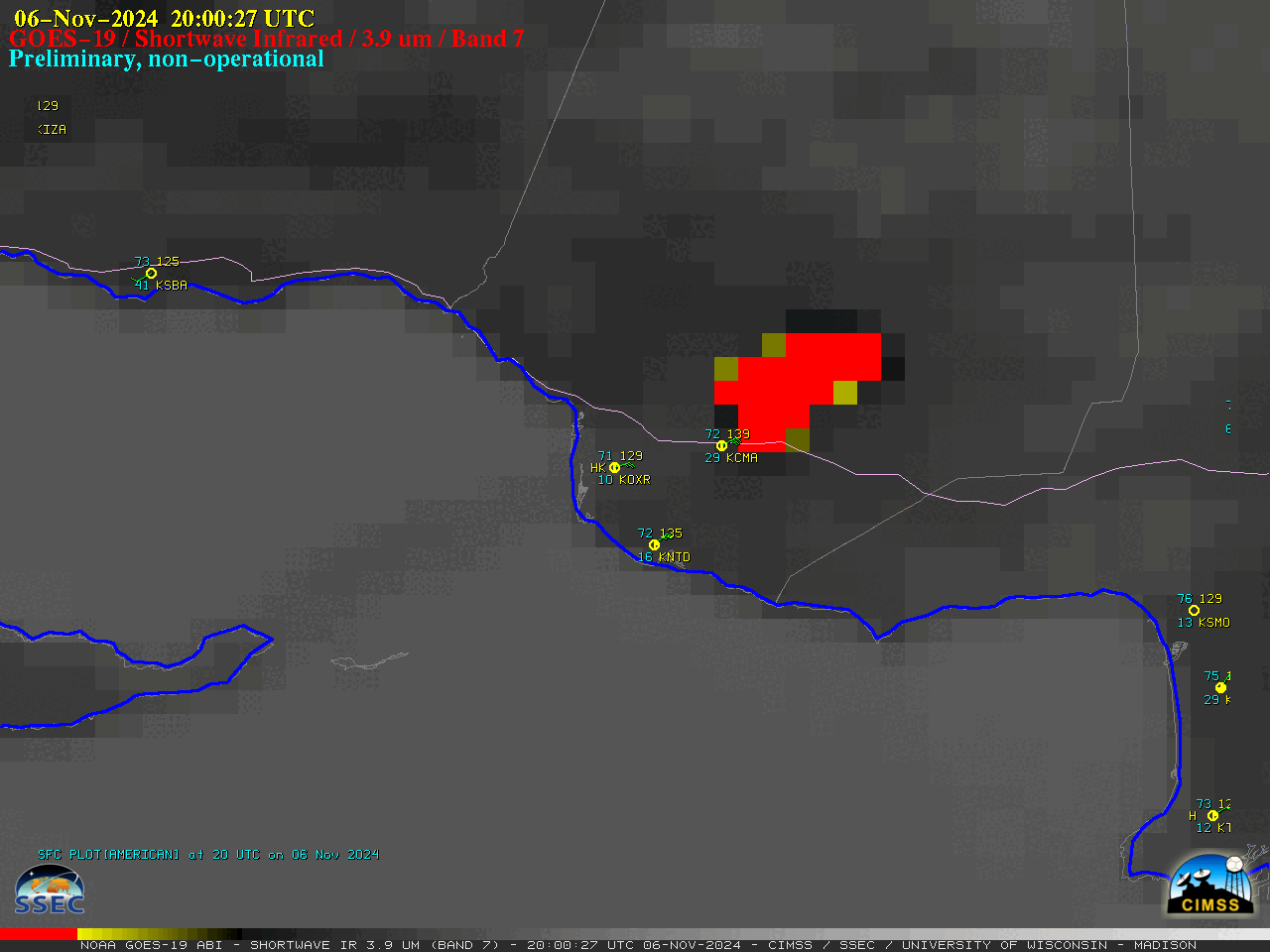
30-second GOES-19 (Preliminary/Non-operational) Shortwave Infrared (3.9 µm) images, from 1701-2200 UTC on 6 November; Highway 101 is plotted in magenta (courtesy Scott Bachmeier, CIMSS) [click to play animated GIF | MP4]
CIMSS True-Color Imagery, below (courtesy Tim Schmit, NOAA/STAR) also from GOES-19 and at a 30-second cadence (and also Preliminary and Non-Operational), as above, shows the development of the smoke plume during the day on the 6th, and shows the dust plume to the south.
Tim Schmit also supplied (Preliminary, Non-Operational) 30-second GOES-19 True Color Imagery shown below.
More information on this fire is available at the Watch Duty website, shown below. Active evacuations are occurring as of 2100 UTC on 6 November 2024. The first entry for this fire is at 1655 UTC — “Possible vegetation fire reported at Balcom Canyon, with smoke visible on Alert California cameras.”
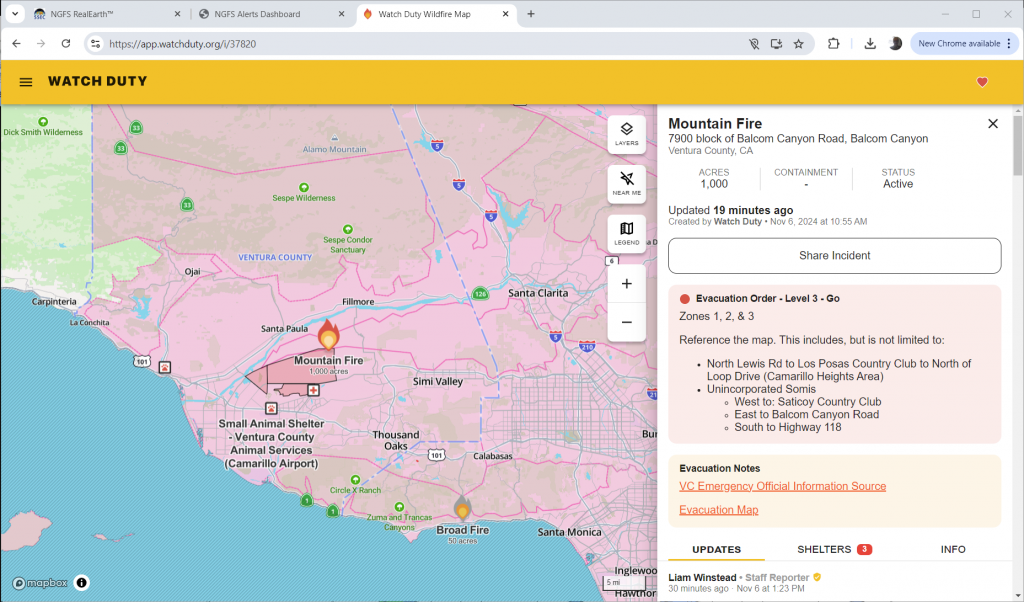
Webcam imagery of this fire is available here. A Satellite Liaison Blog Post by Bill Line on this event is here.

